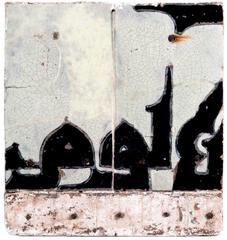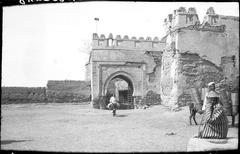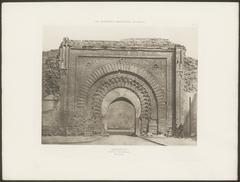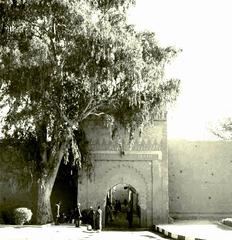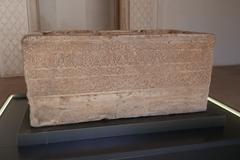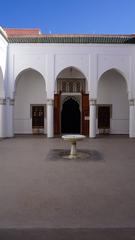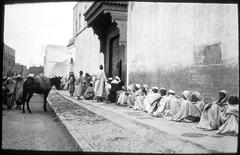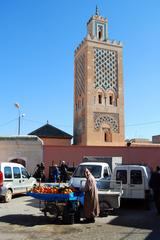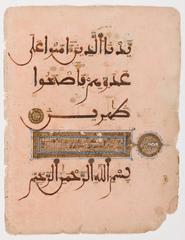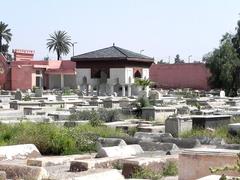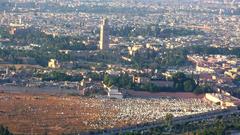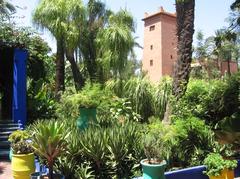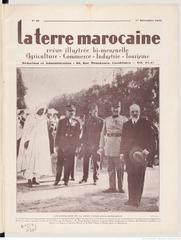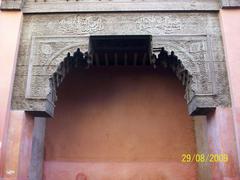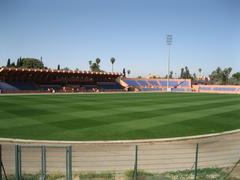Tiskiwin Museum: Visiting Hours, Tickets, and Historical Highlights in Marrakesh, Morocco
Date: 04/07/2025
Introduction
Nestled in Marrakesh’s bustling medina, the Tiskiwin Museum (Maison Tiskiwin) stands as a distinctive testament to North and West Africa’s interconnected heritage. Founded by Dutch anthropologist Bert Flint, the museum is a thoughtfully curated space that traces the ancient trans-Saharan trade routes and celebrates the artistic and cultural tapestry of the Amazigh (Berber), Tuareg, Saharan, and Jewish communities. Housed in a beautifully preserved traditional riad near the Bahia Palace, it offers visitors a rare lens into centuries of cultural exchange, artisanal mastery, and everyday life across the Maghreb and Sahel regions.
Whether you’re researching visiting hours, ticket details, or seeking inspiration for your next cultural exploration in Marrakesh, this guide provides all the essential and up-to-date information. The Tiskiwin Museum, while currently undergoing renovations as of 2024, remains a cornerstone for heritage preservation and academic collaboration in Morocco (Tiskiwin Online; Nomads Travel Guide; Atlas Obscura; via-medina.com; Travelguide Marrakech).
Table of Contents
- History and Founding Vision
- Thematic Organization and Collection Highlights
- Visiting Information
- Nearby Attractions
- FAQs
- Visuals and Media
- Conclusion
- References
History and Founding Vision
The Tiskiwin Museum was established by Bert Flint, whose fascination with the cultural interplay between Al-Andalus (Muslim Spain) and Morocco began during his academic years in the Netherlands. Flint’s first visit to Morocco in 1954 sparked an enduring commitment to exploring and preserving the region’s artistic and anthropological heritage. Settling in Marrakesh in 1957, Flint shifted his attention from urban Andalusian influences to rural Amazigh and Saharan traditions, recognizing deep-rooted links between Morocco and the African continent (Tiskiwin Online).
The museum, officially opened in 1996, occupies Flint’s former residence—a Moorish-style riad—serving as both a repository and a narrative journey along the ancient Saharan caravan routes, particularly the path from Marrakesh to Timbuktu. The museum’s affiliation with Cadi Ayyad University underlines its significance in academic research and cultural preservation (Nomads Travel Guide; Riad Melhoun).
Thematic Organization and Collection Highlights
The Tiskiwin Museum’s layout follows the trans-Saharan trade routes. Each room and courtyard represents a different cultural crossroads, immersing visitors in the evolving influences of Berber, Tuareg, Fulani, and Jewish communities. Themed displays include:
- Berber Tents and Textiles: Showcasing nomadic weaving and interior design traditions.
- Carpets, Fabrics, and Basketry: Illustrating regional patterns and techniques.
- Jewelry and Adornment: Featuring intricate silverwork and symbolic motifs, with special attention to the cultural significance of ornamentation among Amazigh and Jewish communities (Atlas Obscura).
- Leatherwork and Ceremonial Objects: Highlighting craftsmanship from the Sahara and Sahel.
- Musical Instruments and Everyday Items: Offering insight into daily life along the trade routes.
- Photographic Documentation: Rare images, such as the Wodaabe Fulani Gerewol festival, add depth to the displays.
Approximately 90% of the artifacts were sourced from Marrakesh’s souks, underscoring the city’s historic role as a hub for trade and cultural exchange (Nomads Travel Guide; via-medina.com).
Visiting Information
Hours and Ticket Prices
- Current Status: Closed for renovations as of 2024. For reopening updates, consult the official website or local tourist information (Atlas Obscura).
- Typical Hours (When Open):
- Morning: 09:30 a.m. – 12:30 p.m.
- Afternoon: 2:30 p.m. – 6:00 p.m.
- Tickets:
- Adults: 30–50 MAD (~$3–$5 USD)
- Students/Seniors: 20–30 MAD (~$2–$3 USD)
- Children under 12: Free or reduced rates (confirm on-site)
- Tickets are sold in cash at the entrance; online booking is generally unavailable (Travelguide Marrakech; TripHobo)
Accessibility
- The museum is set within a traditional riad featuring stairs, narrow passageways, and uneven floors, which limits full wheelchair access.
- No elevators or ramps are available.
- Assistance can be arranged by contacting the museum in advance; companions are recommended for visitors with mobility needs (Travelguide Marrakech).
Location and Getting There
- Address: 8 Rue de la Bahia, Marrakesh, Morocco
- Directions: Located near the Bahia Palace and Dar Si Said Museum, about a 10-minute walk from Jemaa el-Fna square. Taxis can drop visitors near the Bahia Palace; the remaining route is best navigated on foot (Travelguide Marrakech).
- Interactive Map: Travelguide Marrakech Map
Guided Tours and Special Events
- Guided tours are occasionally available through local operators or by prior arrangement, offering deeper insight into the collection and the history of the caravan routes.
- Special events and temporary exhibitions may occur during peak tourist seasons; check museum channels for announcements (Travelguide Marrakech).
Facilities and Visitor Tips
- Cloakroom: No dedicated cloakroom; small bags are permitted, large backpacks may be stored at the entrance.
- Photography: Allowed without flash or tripods; always respect signage and staff instructions.
- Languages: Exhibit labels are primarily in French. English, Spanish, and German guidebooks or folders are available at the entrance—essential for non-French speakers.
- Refreshments: No on-site café; bring water or visit nearby cafés after your tour.
- Restrooms: Basic facilities, not fully accessible.
- Duration: Visitors typically spend 30–90 minutes, depending on interest.
Nearby Attractions
Maison Tiskiwin is ideally situated for a culture-rich itinerary:
- Bahia Palace: Renowned for its architecture and gardens.
- Dar Si Said Museum: Focused on Moroccan arts and crafts.
- Jemaa el-Fna: Marrakesh’s lively main square, approximately 10 minutes away.
- Le Jardin Secret: Historic garden (0.66 miles).
- Miaara Jewish Cemetery and Lazama Synagogue: Reflecting the city’s Jewish heritage (Lonely Planet).
Frequently Asked Questions (FAQ)
Q: Is the Tiskiwin Museum wheelchair accessible?
A: Accessibility is limited due to traditional riad architecture. Visitors with mobility needs should contact the museum beforehand.
Q: How can I purchase tickets?
A: Tickets are sold in cash at the entrance; online booking is not generally available.
Q: Are guided tours available?
A: Occasionally, through local operators or by prior arrangement.
Q: Is photography permitted?
A: Yes, without flash or tripods. Please follow staff guidance.
Q: What languages are the exhibits in?
A: Mainly French; guidebooks are available in English, Spanish, and German.
Visuals and Media
For a virtual preview or to view more images, visit the museum’s official website or Travelguide Marrakech virtual tour.
Conclusion
The Tiskiwin Museum stands out as an intimate, immersive destination for those seeking to understand Morocco’s multicultural heritage and the far-reaching impact of trans-Saharan trade. Through Bert Flint’s anthropological vision and meticulous curation, visitors trace a journey from Marrakesh to Timbuktu, encountering artifacts that narrate centuries of exchange and influence. While temporarily closed for renovations, the museum’s legacy endures through its ongoing academic collaborations and commitment to preserving both tangible and intangible heritage. For the latest updates on reopening, tickets, and events, consult the museum’s official channels or trusted local guides.
For a richer experience in Marrakesh, consider visiting nearby historical sites and downloading the Audiala app for personalized cultural itineraries and travel resources.
References
- Tiskiwin Online, 2024, Bert Flint’s Biography and Museum Origins
- Nomads Travel Guide, 2024, Tiskiwin Museum Marrakesh Overview
- Atlas Obscura, 2024, Musée Tiskiwin Description and Visitor Information
- via-medina.com, 2024, Maison Tiskiwin and Berber Culture Focus
- Travelguide Marrakech, 2025, Maison Tiskiwin Visiting Hours and Practical Guide
- stayhere.ma, 2024, Diving into the Heart of the Tiskiwin Museum
- egypttoursplus.com, 2024, Musée Bert Flint and Academic Collaborations
- Lonely Planet, 2024, Musée Tiskiwin Visitor Details
- TripHobo, 2025, Maison Tiskiwin Visitor Information
